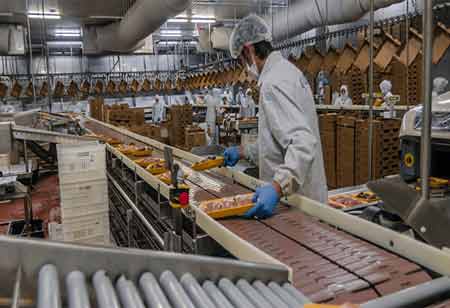THANK YOU FOR SUBSCRIBING
Be first to read the latest tech news, Industry Leader's Insights, and CIO interviews of medium and large enterprises exclusively from Food and Beverage Tech Review
Navigating the Latest Wine Trends
Wine trends emphasise sustainability, low-intervention methods, and diverse varietals. Digital platforms facilitate exploration, while consumers prioritise experiential tastings and seek unique, eco-conscious options.

By
Food and Beverages Tech Review | Thursday, June 20, 2024
Stay ahead of the industry with exclusive feature stories on the top companies, expert insights and the latest news delivered straight to your inbox. Subscribe today.
Wine trends emphasise sustainability, low-intervention methods, and diverse varietals. Digital platforms facilitate exploration, while consumers prioritise experiential tastings and seek unique, eco-conscious options.
FREMONT, CA: Europe is a beacon of oenological exploration, where tradition intertwines with modernity and new trends emerge in the wine industry. From the resurgence of ancient winemaking techniques to adopting sustainability practices, navigating the latest trends in European wine culture requires a keen understanding of its methods and varieties.
Sustainable Viticulture in the Spotlight
Wineries use organic-approved pesticides, cover crops, compost, and other natural options instead of synthetic ones, emphasising preserving and enhancing soil fertility and health. By implementing alternative energy sources like solar and wind power, wineries can lower their operational costs, improve their environmental sustainability, and aid in the general shift to more resilient and sustainable practices.
Wineries are still investigating compostable and biodegradable packaging materials, such as plant-based packaging, compostable closures, and biodegradable corks. A few wineries are experimenting with tetra packs, aluminium cans, and recycled or recyclable plastic as substitutes for traditional packaging materials. Compared to conventional glass bottles, these are frequently lighter and might have less environmental impact. Wineries also use water-based adhesives, soy-based inks, and recycled or sustainably sourced paper to create labels and adhesives that are less harmful to the environment.
Rising Popularity of Wine Varieties
Their mobility and convenience have fueled the appeal of wine cans and single-serve formats. These choices satisfy consumers who want smaller quantities without committing to a complete bottle and those who are constantly on the go. Usually available in 3- or 5-litre capacities, boxed wine offers better value for the money in the growing expenses of life. It also lasts longer than a bottle of wine since there is virtually no oxidation. As it is more environmentally friendly to produce and dispose of, the box minimises the environmental impact on the company and the customers.
Spike in Demand for Low- and No-Alcohol Wines
Low- and no-alcohol wines are expected to continue growing in popularity in Europe as customer choices are shaped by wellness and health-related trends. In response to the growing demand from a more health-conscious and soberly inquiring public, winemakers are producing alternatives. Expertly made, low- or no-alcohol options are expected to rise without sacrificing complexity or flavour.
Orange Wine Making a Comeback
A unique method of manufacturing white wine called orange wine entails letting the grape skins and seeds stay in contact with the liquid for a considerable time throughout the fermenting process. This gives rise to a wine whose colour ranges from light amber to a more intense orange tint. Though it has a long history in some wine-producing regions, orange wine has recently seen a rise in popularity due to the increased interest in natural and unusual winemaking techniques. By 2032, orange wine types are expected to generate USD 67 million.
Surging Interest in Wine-Food Pairing Experiences
Wineries are adding immersive food and wine pairing experiences to their lineup in response to the increased interest in gastronomy. This trend encourages customers to experiment with various flavour combinations that enhance the dining experience beyond conventional pairings. In the exclusive wine-tasting area, guests can partake in an elevated tasting, where they can sample various wines paired with carefully chosen and cooked food by the in-house chef.
Virtual Wine Tourism on the Rise
With the increasing accessibility of virtual travel, wine connoisseurs can explore vineyards and wineries from the comfort of home. Online cellar tours, interactive winemaker experiences, and virtual wine tastings are growing in popularity. Regardless of geographic limitations, this trend enables consumers to interact with their preferred vineyards and find new ones.
From the emergence of innovative winemaking techniques to the revival of ancient grape varieties, the landscape is shifting, reflecting the vital nature of the industry. As trends continue to develop, it is imperative to approach the world of wine with an open mind and a willingness to embrace the unknown.
I agree We use cookies on this website to enhance your user experience. By clicking any link on this page you are giving your consent for us to set cookies. More info


However, if you would like to share the information in this article, you may use the link below:
https://www.fbtechreviewapac.com/news/navigating-the-latest-wine-trends--nwid-1829.html





